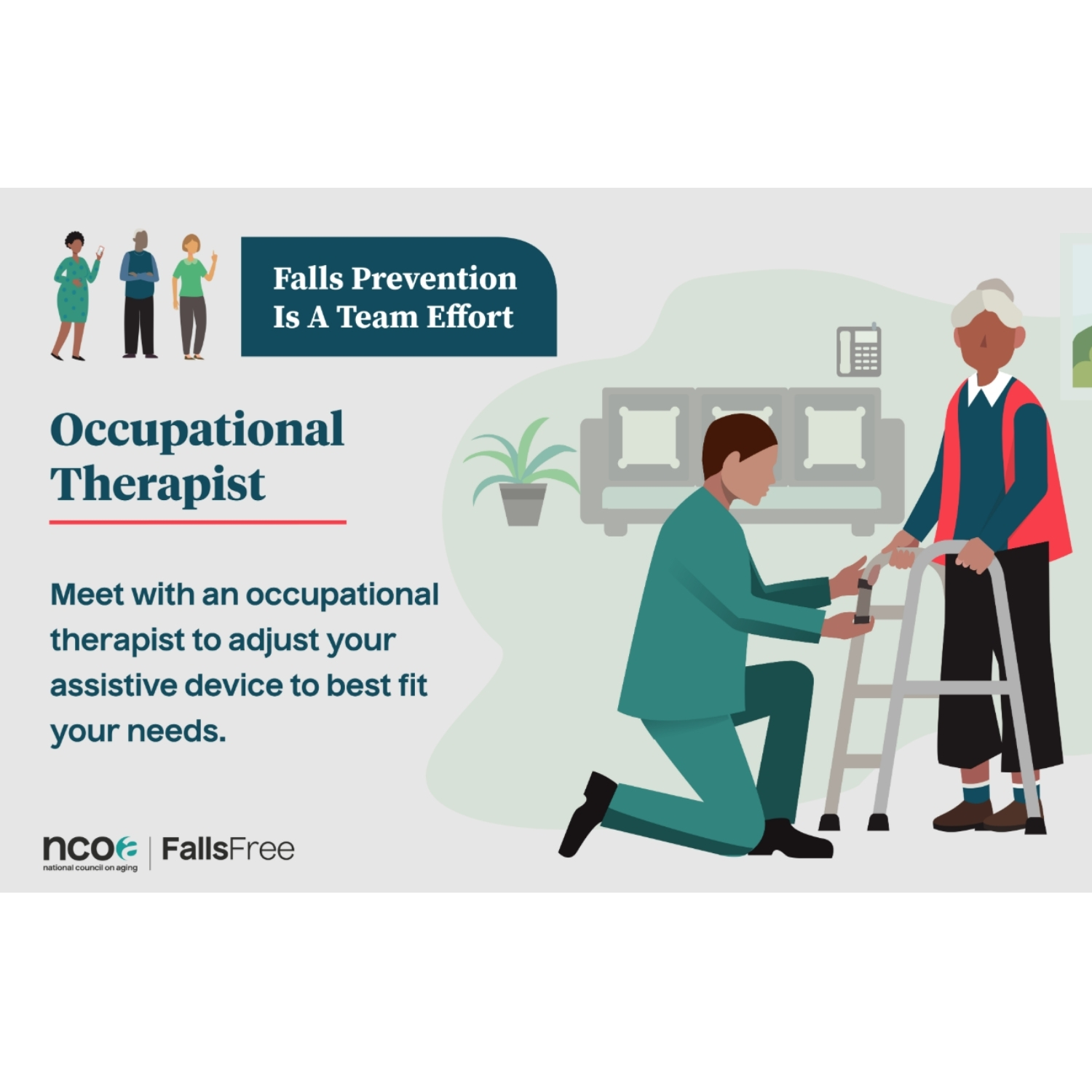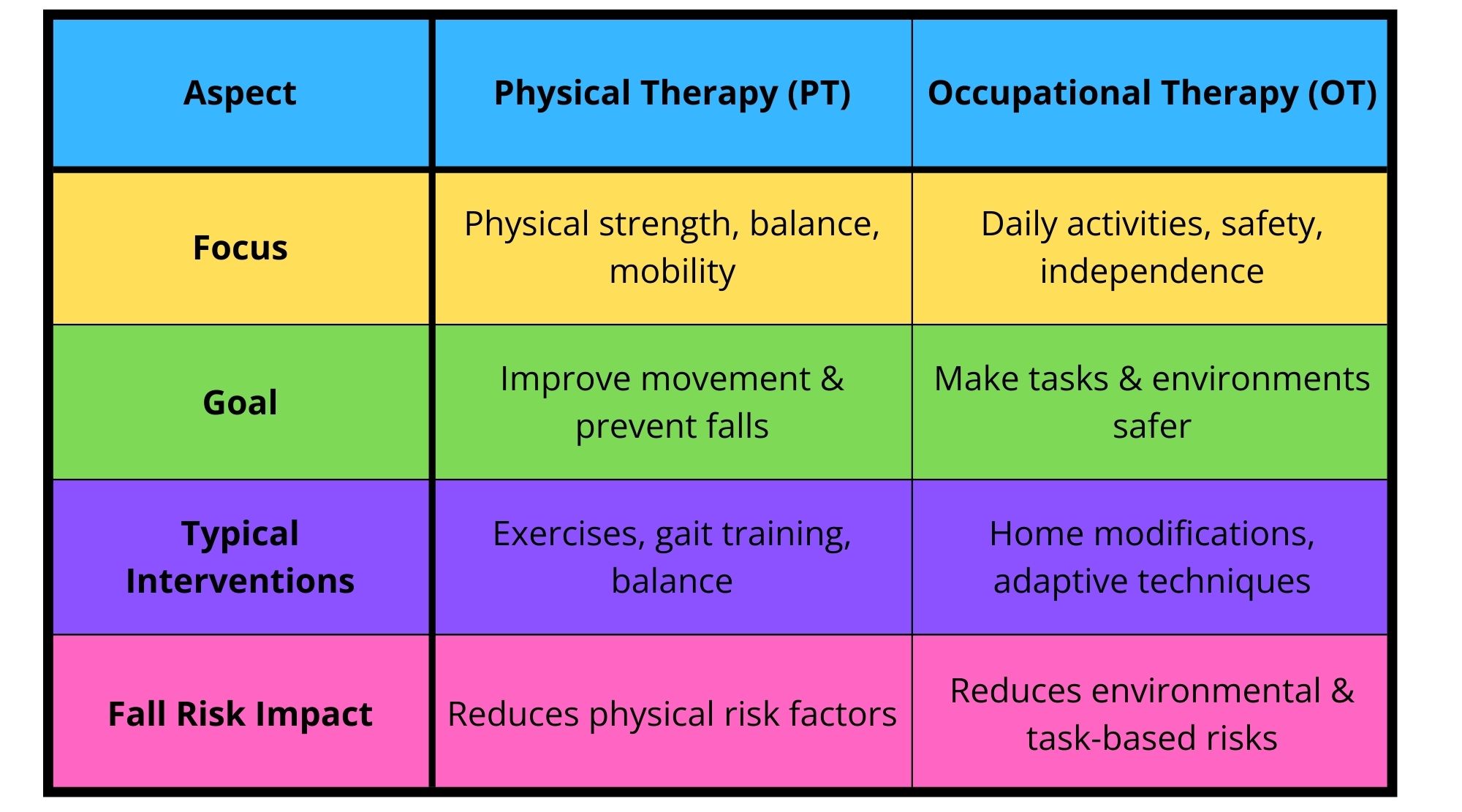Help us support the National Council on Aging NCOA Sept. 22-26, 2025, for Falls Prevention Awareness Week (FPAW), a nationwide observance with partners to raise awareness on preventing falls, reducing the risk of falls, and helping older adults live without fear of falling. Physical Therapy and Occupational Therapy both play critical but distinct roles in reducing fall risk for seniors. Here’s how OT contributes:
Occupational Therapy: Adapting Life to Be Safer
Goal – Help seniors safely perform daily activities and navigate their environments.
- Home Safety Modifications
-
- Recommend and assist with changes like removing tripping hazards, adding grab bars, using non-slip mats, and improving lighting.
-
- Functional Mobility Training
-
- Helps seniors learn safer ways to move around their home (getting out of bed, using the bathroom, etc.).
-
- Assistive Devices and Techniques
-
- Introduction of tools (e.g. reachers, sock aids, shower chairs) and adaptive strategies to reduce risky movements.
-
- Cognitive and Visual Assessments
-
- Evaluates how memory, attention, or vision may contribute to falls and teaches compensatory strategies.
-
- Energy Conservation & Pacing
-
- Teaches how to perform tasks without fatigue, reducing the risk of falling from weakness or dizziness.
-
Combined Impact on Fall Prevention
When used together, PT and OT provide a holistic approach:
♥ PT builds the physical ability to move safely.
♥ OT ensures the environment and activities are adapted to reduce risk.
This dual strategy is particularly effective for seniors who are frail, have chronic conditions, or have already experienced falls.




Leave A Comment